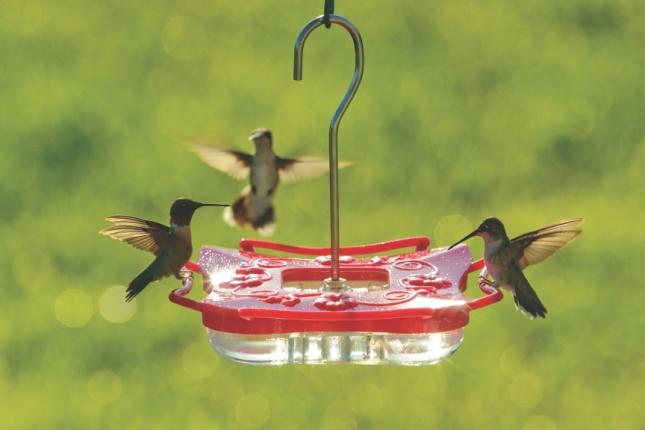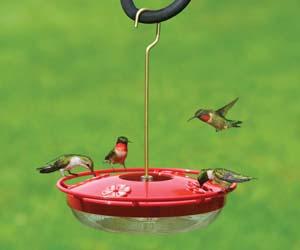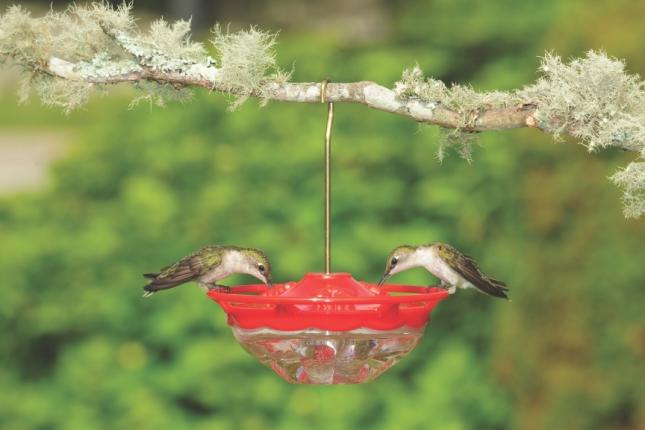
So Much to Know About Hummingbirds!
As the daylight hours start to dwindle and we feel the Fall weather set in, Hummingbirds are migrating south to spend their winter in much warmer climates, where they can still find insects and nectar. Leave your feeders out to give them much-needed energy boost during their journey south! We usually see our last Hummingbirds of the year around mid-October, but sometimes there are a handful of stragglers into November.
Before you know it, it will be Spring again and the Hummingbirds will be back! Keep an eye out starting in mid-April for the early migrants!
Hummingbirds may be the most anticipated bird to visit our yards. And why not? These littlest jewels of the backyard have some of the biggest personalities. Hummingbirds are indeed small, weighing 1/10th of an ounce; about the weight of a penny. They also lay the world’s smallest bird egg; about the size of a blueberry.
For such a little bird, hummingbirds can be very feisty and aggressive when defending their territories; which includes nectar feeders. Multiple feeders, spread throughout your yard, will encourage more hummingbirds to visit and keep bullies at bay. The more feeders you offer and the more spread out they are, the more difficult it is for a protective hummingbird to defend all the feeders. Others, like females or even juveniles, will be able to eat more often, perhaps staying longer to feed or rest at feeders.
Speaking of feeders, these little birds have big appetites. Hummingbirds eat about every ten minutes and their diet is not made up entirely of nectar. They spend more than 25% of their time foraging for small spiders and insects to obtain essential amino acids and other nutrients.
Hummingbirds use their bill and not their tongue to catch prey while they forage near the ground and in trees. They love spiders and spider eggs and keep an eye out for small flying insects like midges, fruit flies and gnats. They also check leaves and branches for leaf hoppers, aphids and even the occasional small caterpillar.
Our little hummingbirds are deceptively big on speed. They often seem to explode away from a feeder like a dragster. They typically fly at 30-45 miles per hour (48-72 kph), but can fly up to 60 mph (96 kph). They can even hover and are the only birds able to regularly fly backwards and even occasionally upside down. They can do this because of an extremely mobile shoulder joint.
Be a seasonally savvy bird feeder by installing multiple hummingbird nectar feeders around your yard to draw in these little birds with the big personalities Be sure to regularly clean the feeders and put out fresh nectar at least every few days.
Visit our store and we'll help you pick out everything you need to attract hummingbirds to your backyard.
Shop for Hummingbird Feeders online at MyWBU!



